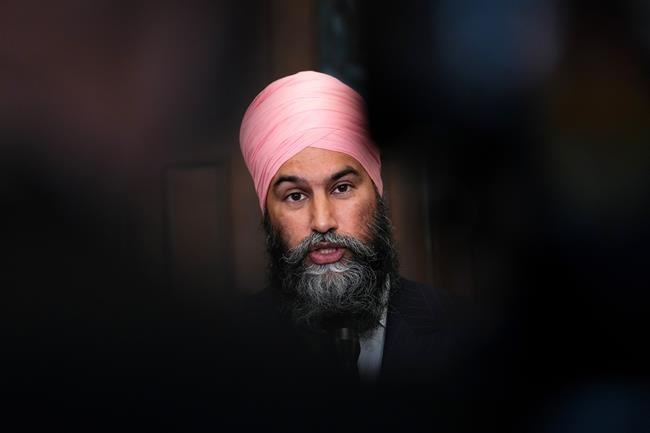OTTAWA — New Democrats in two Western provinces are split over the Liberal government's goal of a net-zero electricity grid by 2035, with the leader of the federal party keeping quiet on his own preferred timeline.
Federal Environment Minister Steven Guilbeault released draft regulations last week aimed at making good on the Liberals' pledge to rid the grid of emissions, sparking sharp reactions from provincial governments in Alberta and Saskatchewan about the 12-year deadline.
Saskatchewan NDP Leader Carla Beck has also come out swinging against the Liberal policy, saying it's unrealistic to replace the province's generation capacity with renewables in that timeline. She believes 2050 is a more attainable goal.
"With more than two-thirds of SaskPower’s generation coming from fossil fuels today, it isn’t realistic to replace all that generation capacity with renewables in the timelines proposed by the federal government," Beck said in a statement.
In neighbouring Alberta, NDP Leader Rachel Notley has supported the 2035 net-zero goal. Notley didn't respond to a request for comment on Monday, but during Alberta's provincial election she announced a plan to meet the Liberal target, saying it would create jobs and grow the economy.
Federal New Democrat Leader Jagmeet Singh would not commit to a preferred target date, saying Ottawa needs to be more accommodating to provincial challenges.
"Setting a target is fine, but if there's no plan to achieve it, what's the point?" Singh said at a press conference on Monday in Edmonton.
He said if the Liberals were serious about reducing emissions, they would create a national power grid so that renewable energy surpluses in one province could be sent to others.
"What we're talking about is making sure we provide real investments in infrastructure so provinces have an alternative," Singh said.
"If we say we want to achieve results where we reduce our emissions, but provinces have no other way to produce electricity, how is that helping us bring down emissions and helping solve the problem? It's not."
While the provincial and NDP are organizationally tied together, they are competing to win votes in different electorates, said Daniel Westlake, an assistant professor of political studies at the University of Saskatchewan.
When it comes to climate change, provincial New Democrat parties sometimes take different positions than their federal counterpart, especially in Western provinces where people are more likely to work in a field related to fossil-fuel development, he said.
"It's a tricky spot for Singh to be in. On the one hand he has to differentiate himself from the Liberals … and they want to be a pro-environmentalist party and have pro-environmentalist voters," Westlake said.
"At the same time, there are still some voters in the NDP that may be working in industries that are sensitive to this."
Westlake said it's a challenge a lot of left-leaning parties are dealing with around the world as countries transition to cleaner energy.
Canada's grid is nearly 85 per cent clean, but demand is expected to double by 2050 as things like cars, buses and trains become electric, and homes and buildings switch away from fossil-fuel heating sources.
Six provinces are on track to meet the 2035 goal because more than 90 per cent of their power generation is already emissions-free.
For the other four — Alberta, Saskatchewan, Nova Scotia and New Brunswick — coal and natural gas still supply between 30 per cent and 85 per cent of their power.
This report by The Canadian Press was first published Aug. 14, 2023.
Mickey Djuric, The Canadian Press




